Review: MERE MORTALS at San Francisco Ballet
The wildly ambitious world premiere by Aszure Barton runs through February 1st at the War Memorial Opera House
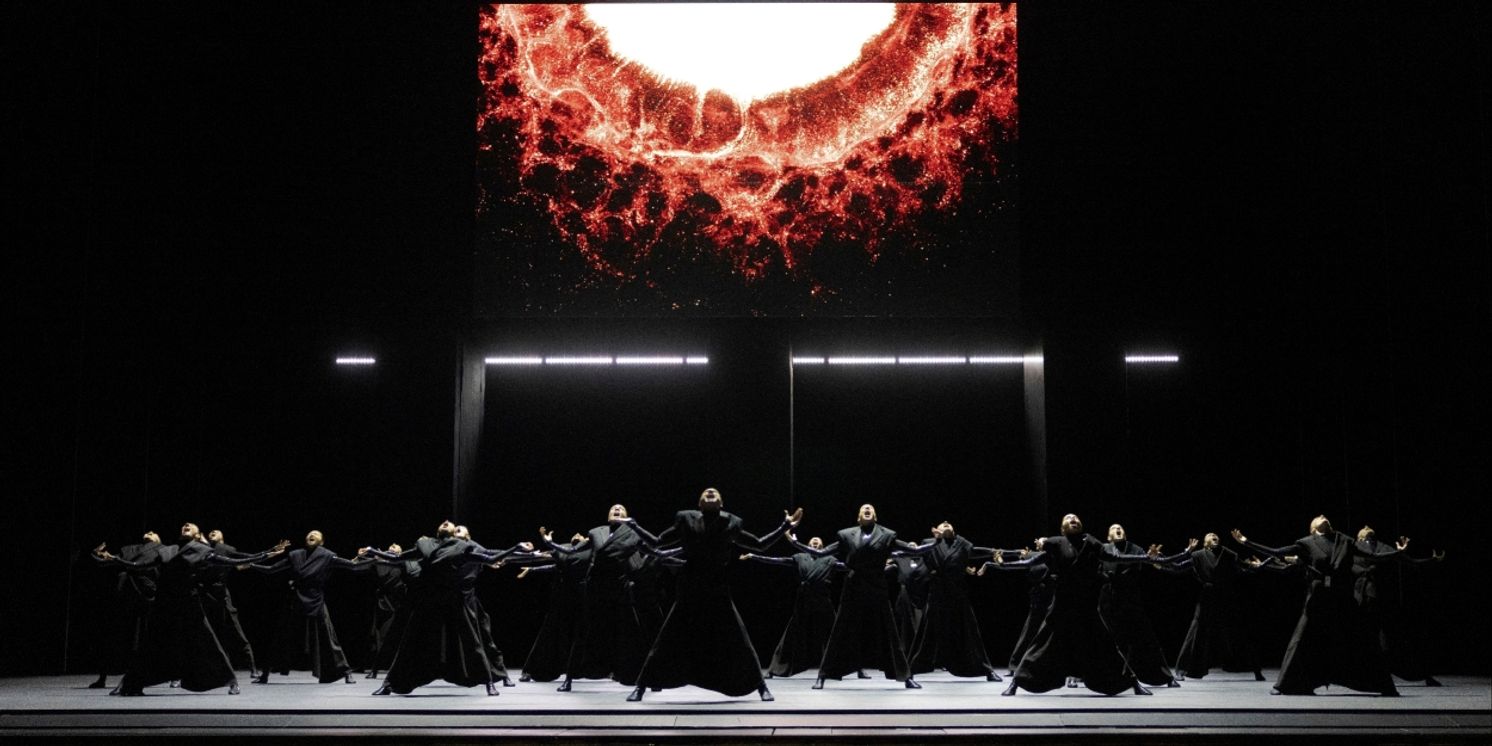
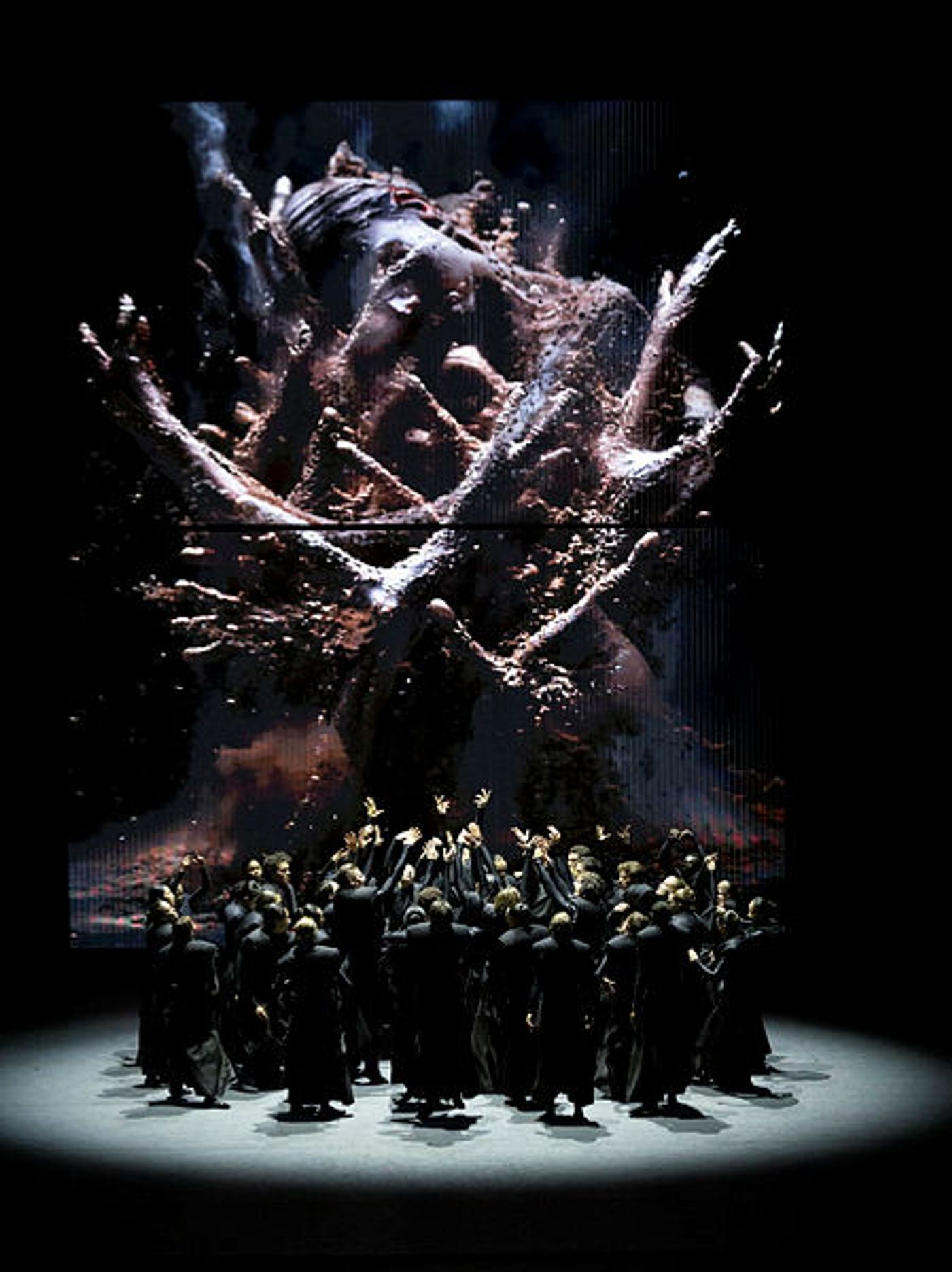
World premieres always come with an extra measure of excitement, but they’re also a roll of the dice – sometimes they come up a winner and sometimes they don’t. San Francisco Ballet’s Mere Mortals, alas, falls into the latter category. When this ambitious ballet was announced as the opening program of Artistic Director Tamara Rojo’s inaugural season, it sounded quite intriguing. Described as an “immersive sensory experience where music and dance converge in a singular environment of mesmerizing light and visuals,” it is a collaboration between the much-in-demand choreographer Aszure Barton and composer Sam Shepherd. Featuring production design and visuals by Hamill Industries, known for their experimental approach that combines emerging and traditional techniques, the piece uses the parable of Pandora to confront our brave new world of AI (as I said – it’s ambitious!). I wasn’t sure just how they were going to manage to pull all that off, but it sounded like the kind of exciting new work that could help the tradition-bound artform of classical ballet engage directly with our contemporary lives. My only fear was that the piece might be too experimental, too “out there,” to even be recognizable as ballet.
Well, I needn’t have worried on that count. What sounded so boldly boundary-breaking on paper comes off as pretty weak tea. As my mind wandered during the performance’s many longueurs, I kept seeing echoes of earlier, better ballets by the likes of such disparate dancemakers as Wayne McGregor, Martha Graham, Jerome Robbins and especially William Forsythe that truly were innovative, deeply strange and intensely moving. In contrast, Mere Mortals seems to lack the courage of its convictions, which is a shame given the incredible talent on vivid display courtesy of its massive cast.
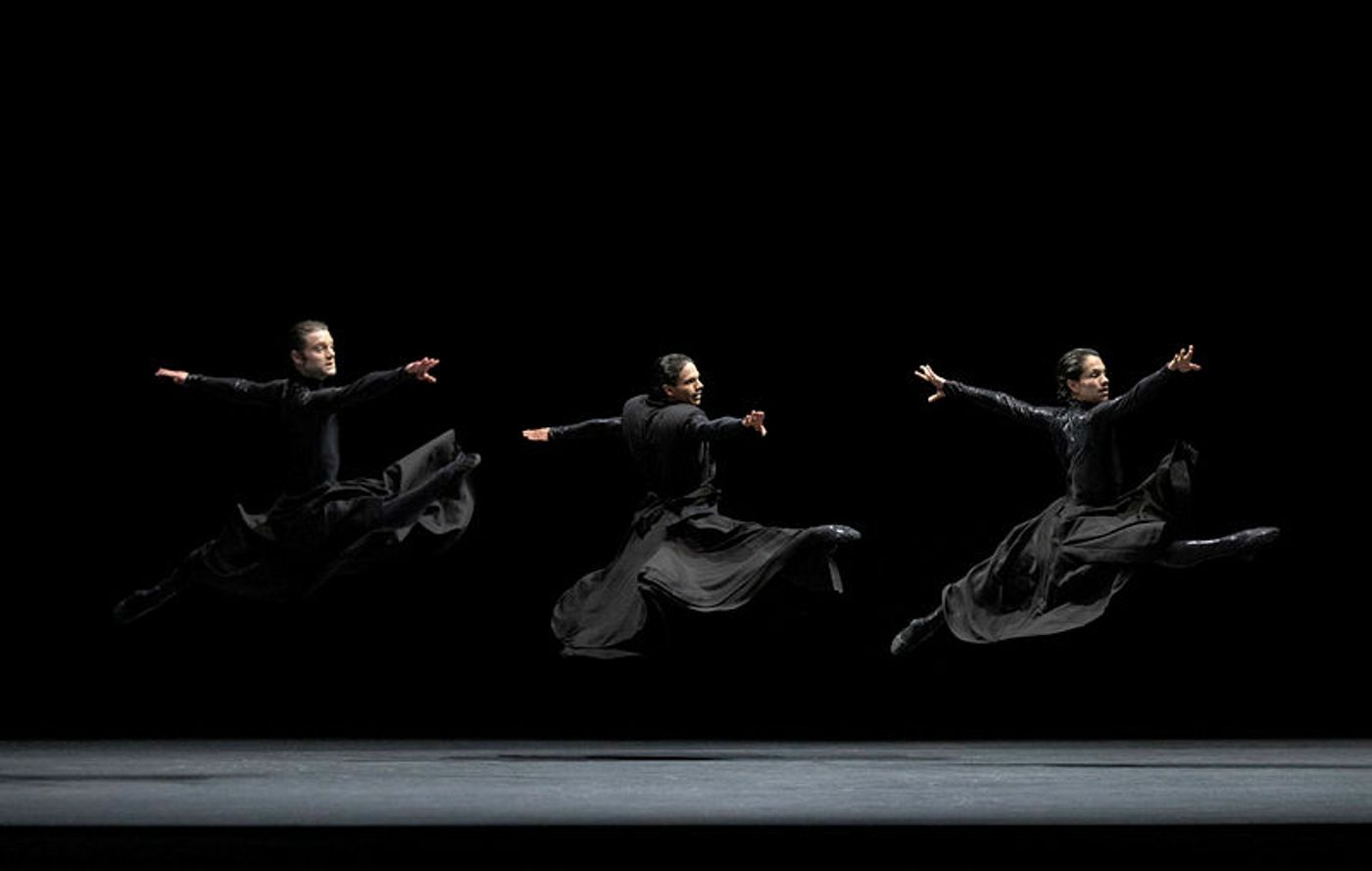
in Aszure Barton's Mere Mortals at San Francisco Ballet
Per the program notes, Mere Mortals incorporates the Pandora and Prometheus myths as allegory for the troubling advent of AI. To be honest, though, the dramaturgy is so fuzzy I’m pretty sure I wouldn’t have grasped that if I hadn’t read the notes ahead of time. What I actually experienced onstage was a large-scale, contemporary ballet set to an electrified orchestral score that seemed to have something to do with climate change and the military-industrial complex, though what it was intending to say about either was pretty much anyone’s guess.
Clearly, a lot of thought has gone into this world premiere – perhaps too much thought and not enough feeling. The end product is pleasantly watchable, and some sequences are even quite engaging, but the piece as a whole never really builds up a head of steam or gets under your skin. Roughly 20 minutes into the 70-minute ballet you start to get the sinking feeling of diminishing returns, and then tedium eventually settles in.
After the stage lights gradually come up to reveal the character of Hope dancing a sinuous, spectral solo, some 40 dancers come trouping onstage wearing cumbersome black skirt-suits with padded shoulders, moving to percussive instrumentation that suggests machine gun fire. Dimly lit and performing in front of a black backdrop, they register more as shadowy presences than as flesh and blood human beings. They strike off-kilter poses and flawlessly execute some peel-off moves to the propulsive score, and for a few minutes this is actually pretty exciting stuff. When the characters of Pandora, Prometheus and Epimetheus are introduced, however, none is given anything particularly interesting to do and all eventually overstay their welcome. Pandora’s entrance feels uncomfortably like the birth of “The Novice” from Jerome Robbin’s The Cage, and a later pas de deux for her and Epimetheus is sexualized in a sort of S&M-lite manner that left me embarrassed for the dancers.
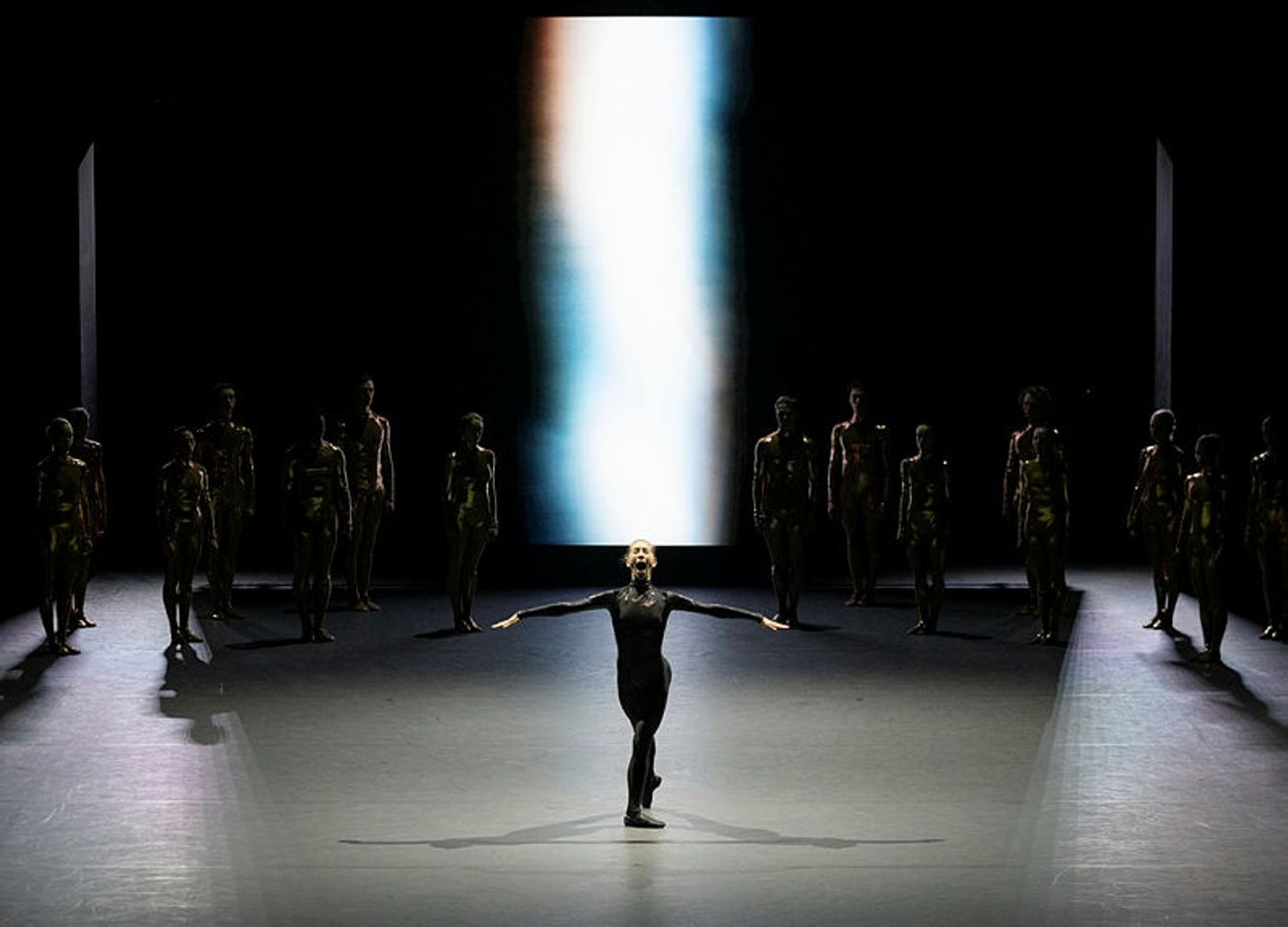
at San Francisco Ballet
When the full corps returns for the final movement in gold lame bodysuits, at least we’re given something fun to look at, even if the choreography still seems mighty thin (are the fabulous dancers of SFB really reduced to doing the Wave?). By this point, the score has morphed into run-of-the-mill contemporary classical music with astringent strings as the ballet reaches its underwhelming conclusion. When the curtain comes down, you can feel the audience’s bemused reaction of “Wait, that’s it?!” The cumulative effect feels unsatisfying, like a meal that is only appetizer, no entrée or dessert.
Aside from the patchy choreography, what’s especially disappointing is the timid design work by Hamill Industries that is far from immersive. The movable onstage video screens are clunky and feel undersized amidst the vastness of the Opera House, and the images they project suggesting fire, lava, whirling clouds and galaxies aren’t particularly interesting or fresh. At one point, Pandora stands center stage with her back to the audience for what feels like an eternity while abstracted weather systems whoosh behind her silhouette. This is presumably meant to depict the release of the evils from her “box,” but it brings the ballet to an unfortunate standstill.
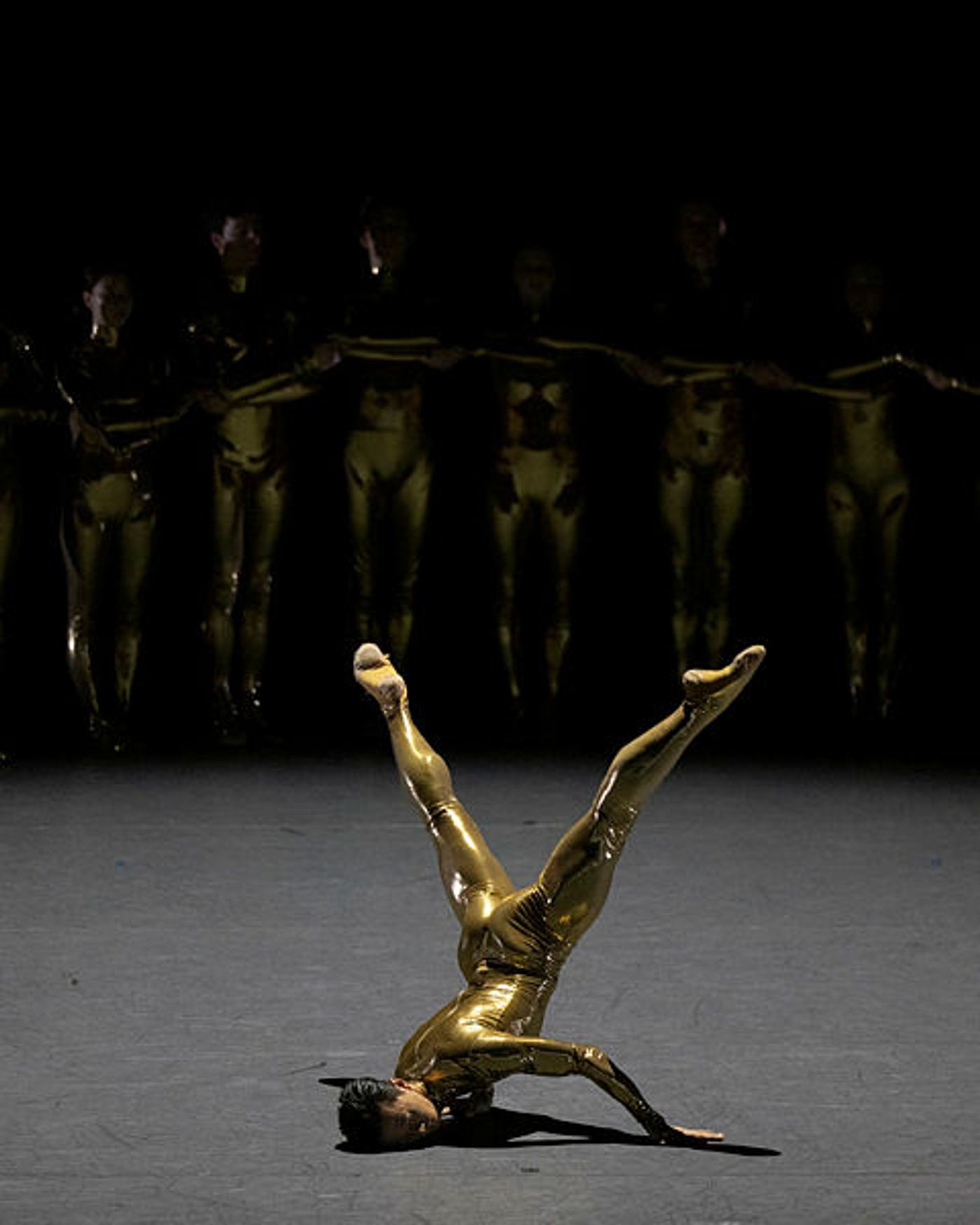
at San Francisco Ballet
The good news for the evening is that the dancing is superb throughout. The phenomenal Wei Wang as Hope is so transfixing in his opening solo that you think you’re going to be in for a real treat. Barton has given him the kind of undulating-arm choreography usually reserved for female swans, and Wang totally nails it with a stillness and otherworldliness that is utterly beguiling. Isaac Hernández does what he can in the under-choreographed role of Prometheus, generally reduced to strutting about the stage. Jennifer Stahl makes a valiant effort to inject some intrigue as Pandora, by far the ballet’s biggest role, but she, too, is fighting an uphill battle to sustain our interest.
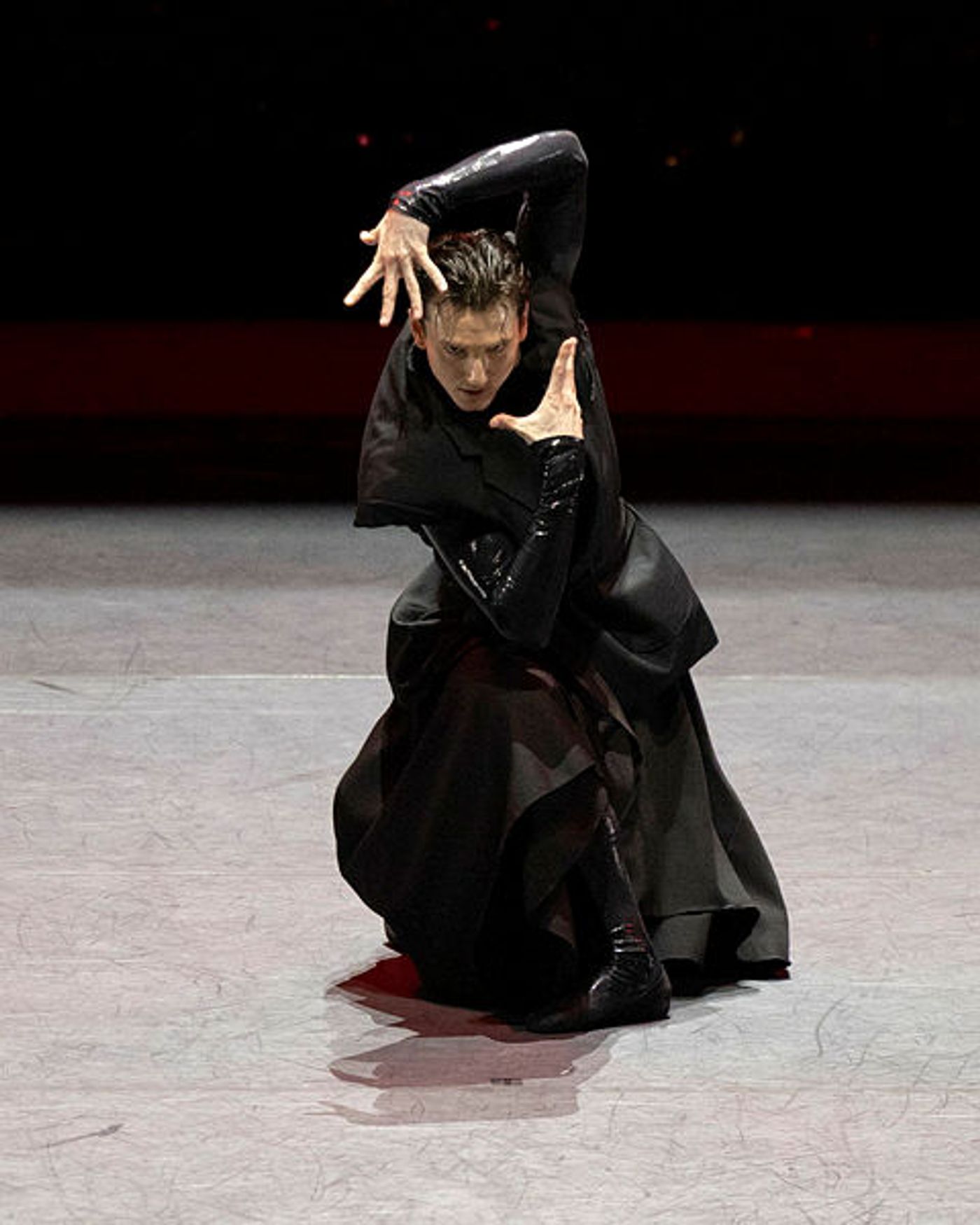
Mere Mortals at San Francisco Ballet
Parker Garrison makes a stronger impression as Epimetheus. He may still be a junior corps de ballet member in only his second season with SFB, but Garrison seems not to know that, already showing an uncanny maturity and individuality, excelling both as an individual contributor and as a solid partner. I’m already looking forward to seeing what other opportunities he is given later this season.
The most effective part of the evening actually occurs not onstage, but out in the auditorium while waiting for the proceedings to start. As a sort of indistinct yet agitated rumble fills the hall, if you look up to the heavens, you will notice the Opera House’s iconic silver art deco chandelier lit a startling blood-red against a midnight-blue ceiling. The effect is eerie, enigmatic, gorgeous and deeply unsettling. In essence, it’s everything I wished the actual ballet had been.
This world premiere may be a disappointment, but at least we can take heart that with five more programs still to come in SFB’s 2024 season, things will surely be looking up from here.
(all photos by Chris Hardy)
San Francisco Ballet’s Mere Mortals continues through Thursday, February 1st at the War Memorial Opera House, 301 Van Ness Avenue, San Francisco, CA. Running time is approximately 70 minutes, no intermission. Evening performances include an afterparty in the price of the ticket, featuring a Bay Area DJ and a cash bar located in the lobby areas. For tickets and additional information, visit www.sfballet.org or call (415) 865-2000, M-F 10am-4pm.
Reader Reviews

Videos

